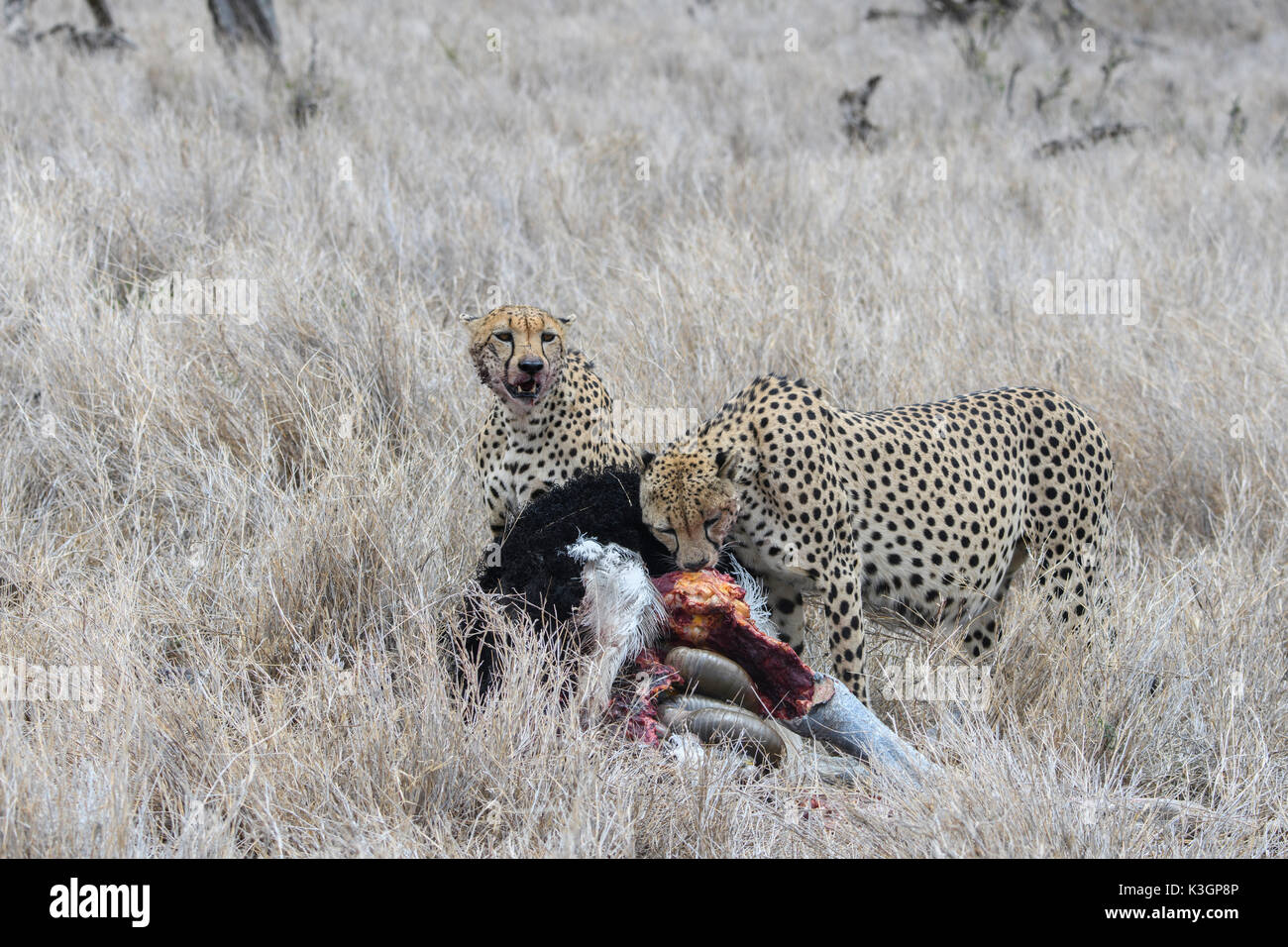
An ostrich family walks across Africa’s open plainsĪfter about 40 days, the new chicks hatch, all feathered and ready to walk! Within days, they leave the nest to follow their parents, who protect them from the hot sun or rain by keeping them huddled under their body or outstretched wings. The alpha male and dominant female then look after the nest, taking it in turns to incubate the eggs. The main female may lay up to 11 eggs, which are positioned in the centre of the communal nest where they’re safest, and the other hens lay between two to six eggs.

But these are no ordinary eggs, gang – they’re the largest eggs in the world, averaging around 15cm long and weighing up to a mega 1.5kg! After mating, the hens lay their eggs in the nest. Each group also has a dominant hen, she will only mate with the alpha male, but he may mate with other females in the herd as well.ĭuring breeding season, the alpha male makes a nest in the ground and attempts to attract females by, believe it or not, dancing! His impressive moves include dropping to the ground, shaking his wings and tail, and swaying his head and neck from side to side. Males compete with one another for control of several females (or hens), and the winner becomes the leader of the herd. Ostriches live in groups, called herds, generally made up of around 12 individuals. They generally live in the vicinity of grazing animals such as wildebeest, antelopes and zebras, and together they form a great partnership – the grazers stir up insects and rodents for the ostriches to eat, and the ostriches help alert the grazers to dangers such as approaching lions. But they will also eat insects, lizards and other small creatures, too. Ostriches are mainly vegetarian, eating roots, leaves, flowers and seeds. Have you ever heard that ostriches bury their head in the sand to hide? Well, as funny as that sounds, it’s not true! But from far away, depending what position the ostrich takes, it can sure look that way, hence how the myth began. Its coloured feathers help it to blend in with the sandy soil where it lives. But if danger gets too close for comfort, the ostrich will often lie low to hide, stretching its neck along the ground. With their tall height and excellent eyesight, these amazing creatures are great at spotting potential predators from far away. If an ostrich is cornered by a hungry predator, such as a lion, cheetah, leopard or hyena, it will kick with a force powerful enough to kill! And check this out, each two-toed foot is armed with a ten centimetre sharp claw, too, so predators had better beware! Ostriches can reach speeds of over 70km per hour This brilliant bird’s strong legs don’t only carry the ostrich where it wants to go – they’re super effective when it comes to self-defence. The ostrich might not be able to fly, but boy can it run! Using its long legs, powerful thighs and strong feet, this big bird can cover five metres in a single stride and reach speeds of over 70km per hour! When zooming along at such mega speeds, it holds out its short wings to help it balance. Ostriches huge eyes (which are bigger than their brains!) give them excellent eyesight Both sexes have small heads, a short, wide beak and big brown eyes protected by long dark lashes. Males and females have different coloured feathers – males sport black plumage with a white tail, and females are mostly brown.

This flightless bird has a long, bare neck, long, sturdy legs and a bulky body covered with feathers. It stands up to a massive 2.7m tall and weighs as much as 159kg – that’s around 1m taller than the average man, and the weight of two men combined! Habitat: Grassland, savannah and open woodlandįound across Africa’s hot savannahs and open woodland, the ostrich is the world’s largest bird. They’re seriously tall and super speedy – check out our fascinating ostrich facts! Ostriches can grow to 2.7m tall!


 0 kommentar(er)
0 kommentar(er)
